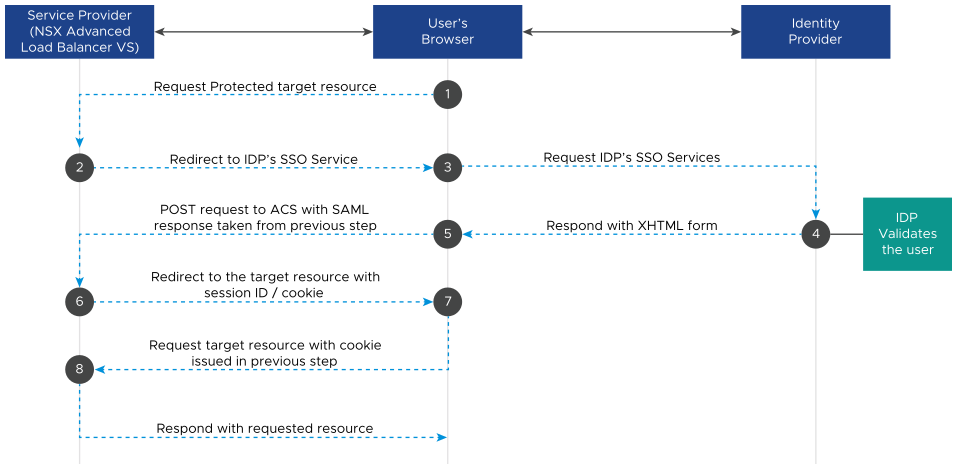NSX Advanced Load Balancer supports SAML 2.0 authentication for clients. It serves as a Service Provider (SP) to protect your load-balanced back-end HTTP/HTTPS applications.
Security Assertion Markup Language (SAML) is an XML-based framework used for authentication between a service provider (resource provider) and an identity provider (authentication proxy). SAML provides the single sign-on (SSO) capability.
NSX Advanced Load Balancer supports SP-initiated SSO with third-party identity providers (IdP). As a service provider, the NSX Advanced Load Balancer virtual service is responsible for ensuring secure access to the back-end applications load-balanced by NSX Advanced Load Balancer.

As illustrated, the workflow for SAML client authentication is as follows:
In the role of service provider, the NSX Advanced Load Balancer virtual service sends an authentication request to the IdP before allowing users to access the backend applications.
Once the IdP successfully authenticates the user, it shares the authentication with NSX Advanced Load Balancer.
NSX Advanced Load Balancer validates the response received from IdP and provides the session cookie to the user.
The user then sends the request for the target resource with the same cookie.
NSX Advanced Load Balancer validates the cookie and allows access to the user.